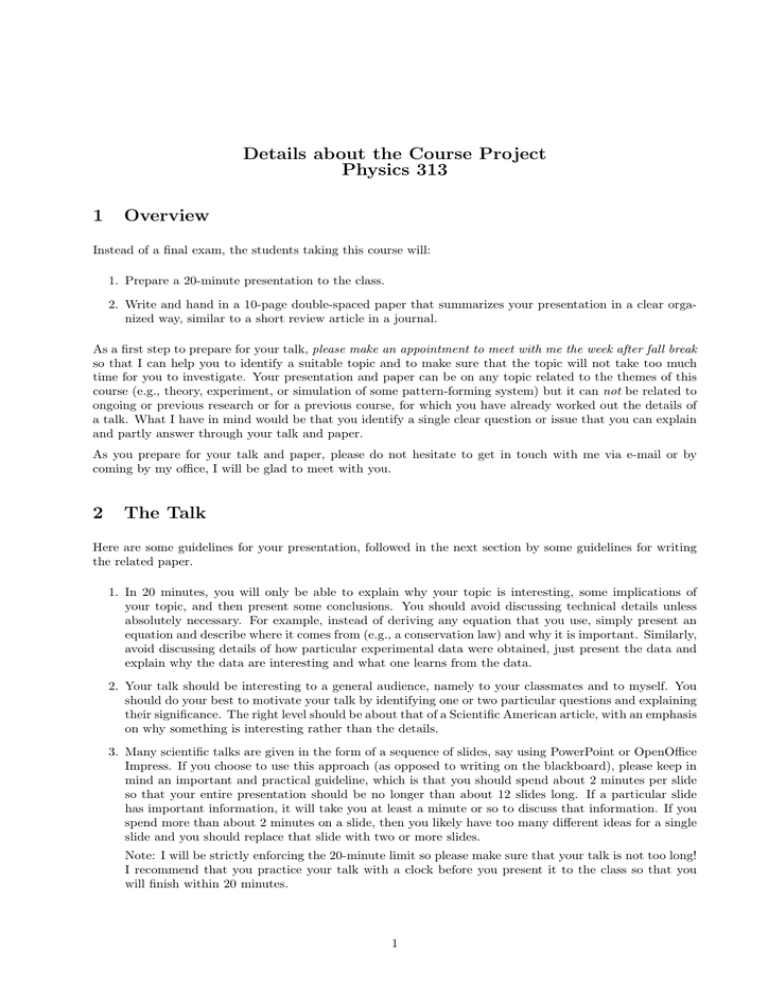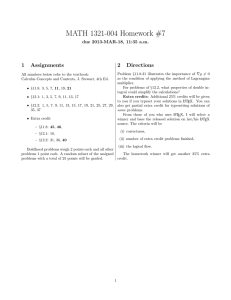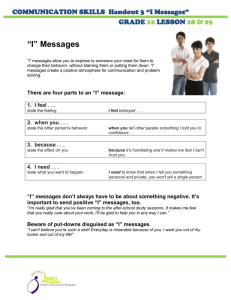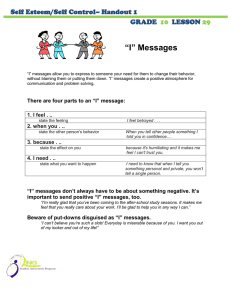Details about the Course Project Physics 313 1 Overview
advertisement

Details about the Course Project Physics 313 1 Overview Instead of a final exam, the students taking this course will: 1. Prepare a 20-minute presentation to the class. 2. Write and hand in a 10-page double-spaced paper that summarizes your presentation in a clear organized way, similar to a short review article in a journal. As a first step to prepare for your talk, please make an appointment to meet with me the week after fall break so that I can help you to identify a suitable topic and to make sure that the topic will not take too much time for you to investigate. Your presentation and paper can be on any topic related to the themes of this course (e.g., theory, experiment, or simulation of some pattern-forming system) but it can not be related to ongoing or previous research or for a previous course, for which you have already worked out the details of a talk. What I have in mind would be that you identify a single clear question or issue that you can explain and partly answer through your talk and paper. As you prepare for your talk and paper, please do not hesitate to get in touch with me via e-mail or by coming by my office, I will be glad to meet with you. 2 The Talk Here are some guidelines for your presentation, followed in the next section by some guidelines for writing the related paper. 1. In 20 minutes, you will only be able to explain why your topic is interesting, some implications of your topic, and then present some conclusions. You should avoid discussing technical details unless absolutely necessary. For example, instead of deriving any equation that you use, simply present an equation and describe where it comes from (e.g., a conservation law) and why it is important. Similarly, avoid discussing details of how particular experimental data were obtained, just present the data and explain why the data are interesting and what one learns from the data. 2. Your talk should be interesting to a general audience, namely to your classmates and to myself. You should do your best to motivate your talk by identifying one or two particular questions and explaining their significance. The right level should be about that of a Scientific American article, with an emphasis on why something is interesting rather than the details. 3. Many scientific talks are given in the form of a sequence of slides, say using PowerPoint or OpenOffice Impress. If you choose to use this approach (as opposed to writing on the blackboard), please keep in mind an important and practical guideline, which is that you should spend about 2 minutes per slide so that your entire presentation should be no longer than about 12 slides long. If a particular slide has important information, it will take you at least a minute or so to discuss that information. If you spend more than about 2 minutes on a slide, then you likely have too many different ideas for a single slide and you should replace that slide with two or more slides. Note: I will be strictly enforcing the 20-minute limit so please make sure that your talk is not too long! I recommend that you practice your talk with a clock before you present it to the class so that you will finish within 20 minutes. 1 4. Each slide should be short and make only a few points (three at most). You should avoid using more than one equation per slide. You should try to use a figure or animation whenever possible since most audiences can grasp visual information more easily than mathematical information. 5. If you present a graph of data, make sure to take the time to discuss the important features of the graph. You should explain what quantity is plotted on the x-axis and give its physical units, what quantity is plotted on the y-axis and give its physical units, and indicate by pointing to the graph any interesting or important features. You should not show a graph unless it makes a substantial point. 6. Similarly, if you present an equation, take the time to describe in words what the different symbols mean, e.g., what each parameter means as well as what the variables mean. If possible, you should also try to describe the physical meaning of the equation and of its components, e.g., that the equation states the conservation of mass. 7. Your final slide should present your conclusions in the form of 3-4 specific points. If you find you are running out of time, be prepared to jump to your concluding slide so that you can finish your talk on time. Your presentation will be graded on the following details: 1. Identification of a clear interesting scientific question. This is perhaps the most important part of the talk, that you have something interesting and worthwhile to talk about. 2. Good introduction that helps the class to appreciate why your question is interesting. 3. Good speaking style: you talk to the audience, not to the screen, speak slowly and clearly so that everyone can understand you, make good eye contact with the audience. 4. Slides are clear, easy to understand, and well organized. 5. Each slide makes one or two good points 6. A short clear useful conclusion. 3 The Paper 1. You should write your paper as if talking to your 313 classmates. You should assume that the reader has no prior knowledge of your topic and so you should introduce and motivate your topic. Just like your talk, your paper should emphasize the implications and significance of results rather than focus on details. 2. In your paper, you should do your best to identify a particular question (or a few questions) and then explain how the results of your paper (equations, simulations, or experimental data) tried to or succeeded in answering these questions. 3. Your paper should have a title, an abstract of no more than 600 characters, an introduction, a body, conclusions, and a bibliography. I can provide you with a LATEX template if you know how to use LATEX. 4. Most scientists first read the abstract, first paragraph, and concluding paragraph of a paper before deciding whether to read the entire paper. You should therefore work particularly hard on these parts of your paper, to make them clear, interesting, and compelling. 5. Your paper should be double spaced, which will make it easier to read and to correct. I will be glad to look over early drafts of your paper and give you feedback if that will be helpful to you. 2




